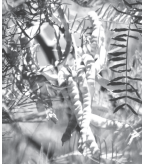 |
|||||||
| The Hohokam Canal System and Mesquite - The Hohokam canal system was probably built primarily for the cultivation of a Mesquite Bosque. It has been long questioned why the Hohokam built such an extensive system on one of the saltiest rivers in North American. Bean and especially corn cultivation is moderately to severely impacted by saline water and salinity. Mesquite is not impacted by levels of salinity found in the Salt River basin. My observation is that the Hohokam’s primary reason was to grow mesquite in the “delta” shaped canal system and mesquite conditioned the soil for corn and beans with nitrogen, and shade temperature reduction, and moderated freeze sensitivity in the winter. Prosopis L. Mesquite, as described by Franklin T. Bonner, scientist emeritus USDA Forest Service, is a tree which is “a hardy nitrogen-fixer. Mesquite legumes make high-quality forage for livestock and wildlife, and the seeds were widely used by Native American peoples in the Southwest (Davis and others 1975; Marting and Alexander 1974; Vines 1960). The crude protein contents of honey and velvet mesquite seeds are 31 and 24%, respectively (Becker and Grosjean 1980), and the legumes of honey mesquite are high in carbohydrates (Harden and Zolfaghari 1988).” Professor Todd Bostwick said “the Hohokam would have always faced the challenge of soil salinity, yet they farmed the same region for more than a thousand years, indicating that they understood how to deal with soil salinity — through the flushing of soils, leaving certain tracts fallow, alternating crop types planted, and other soil management techniques. Mesquite comprises approximately 50% of the archaeological record as compared to corn and beans.” While I agree with Professor Bostwick, my observation indicates that, from the archaeological record, the canal system was built primarily to “grow mesquite” for food, fire wood, and building materials. Worldwide, especially in very arid climates, trees are grown as an agricultural crop, and the Hohokam were doing the same. Mesquite is a legume and as such it provides probably the “other” soil management technique used to add fertilizing soluble nitrates the soils. In interviews, neither professors Bostwick nor Howard, indicated that the Hohokam used “grid gardens” which have been proposed as the primary agricultural design during that time period elsewhere in Oasis America. I suggest that the Salt River mesquite delta across the Phoenix |
|||||||
 |
 |
||||||
| When provided with adequate water, native mesquite produces a prolific supply of food, building material, and firewood. Mesquite is approximately 50% of the food product recovered from Hohokam sites. |
|||||||
| Valley also functioned in such a way as the salty water was used very little for corn and beans or perhaps not used at all. The primary parasite for corn is root cutworm and with very few hours below freezing each year, gardens in the Phoenix Valley could perhaps have only been used for a year or two maximum due to root cutworm infestations. I propose that the strategy used by the Hohokam was to maintain an extensive mesquite forest watered by the canal system and that the gardens for corn and beans were moved throughout the “delta” continuously. Another factor to consider is that some of the canals are very deeply incised. This would have put the irrigation water well below any usable level for corn and beans, but would have been ideal to water the deep tap roots of the mesquite. |
|||||||
copyright 2005 - Richard D Fisher - DigitalTeamWorks.com